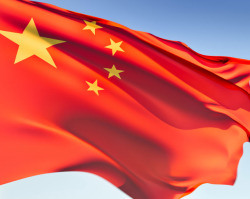The number of active smartphones in China exceeded 700 million by the end of 2013, says a new report from analytics firm Umeng. Out of all the devices sold in 4Q 2013, 41% were to people purchasing their first smartphone. The rest were bought by people upgrading their phones.
(As a commenter below points out, active smartphones does not necessarily equal individual users).
China became the world’s largest smartphone market in November 2011, but sales have gradually slowed as mobile penetration rates increase. Shipments decreased for the first time in more than two years at the end of 2013, according to a recent report from IDC. As the price of smartphones drop dramatically, however, more first-time users are buying their first device.
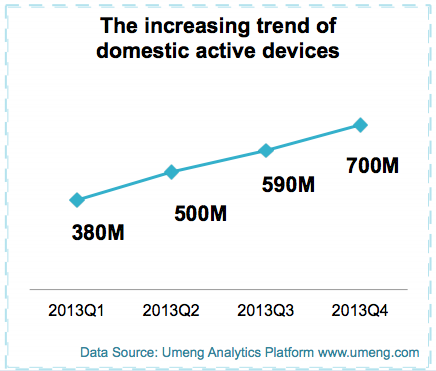 Most of the smartphones sold last year in China, or 57%, were Android devices that cost less than $350. But there is still strong demand for more expensive handsets. High-end smartphones priced above $500 accounted for 27% of smartphones sold last year; of that amount, 80% were iPhones.
Most of the smartphones sold last year in China, or 57%, were Android devices that cost less than $350. But there is still strong demand for more expensive handsets. High-end smartphones priced above $500 accounted for 27% of smartphones sold last year; of that amount, 80% were iPhones.
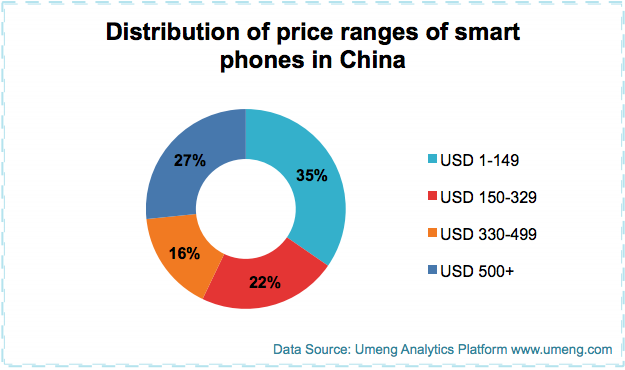
iPhone users are also now less likely to jailbreak their phones, thanks to China’s new status as one of Apple’s launch markets; tools like Kuaiyong Apple Assistant, which offers free versions of paid iOS apps; and security concerns about jailbroken devices. Last year, the percentage of jailbroken iPhones in mainland China fell to 13% from 30% at the beginning of the year.
Though the Android marketplace is still highly fragmented, with more than 100 manufacturers, Samsung and Xiaomi still dominate. The two companies made all of the top 10 Android devices in 4Q 2013.
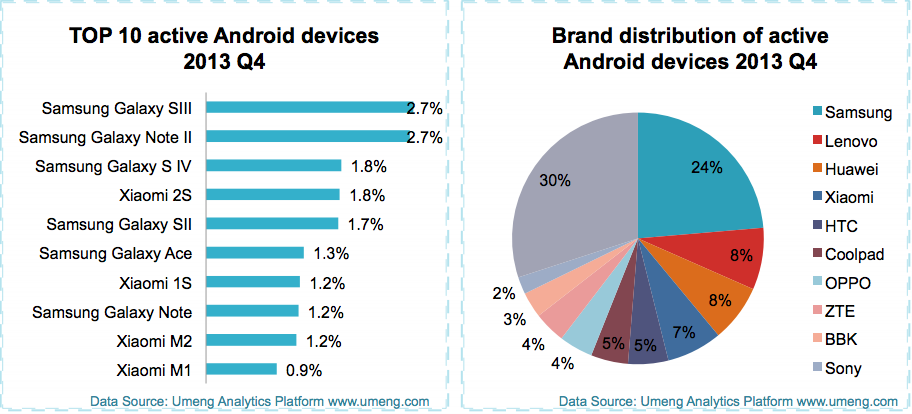
Though people who own smartphones that cost less than $150 still stick to casual games, most players are spending much more time in each title thanks to improvement in hardware like processors and memory and graphic cards.
In fact, Umeng writes that “the term ‘casual games’ is becoming a misnomer as users are spending large blocks of time playing these games rather than dipping in and out as was once the case.”
Players are also starting to demand the official versions of games, instead of clones or pirated versions. Last year was the first year “Chinese developers took IP seriously with many developers licensing IP from rights holders,” said Umeng.
By December 2013, 20% of the top 100 games in China licensed third-party intellectual property, compared to just 13% in June 2013. Popular titles included “Dad Where Are We Going?” and “Despicable Me.”
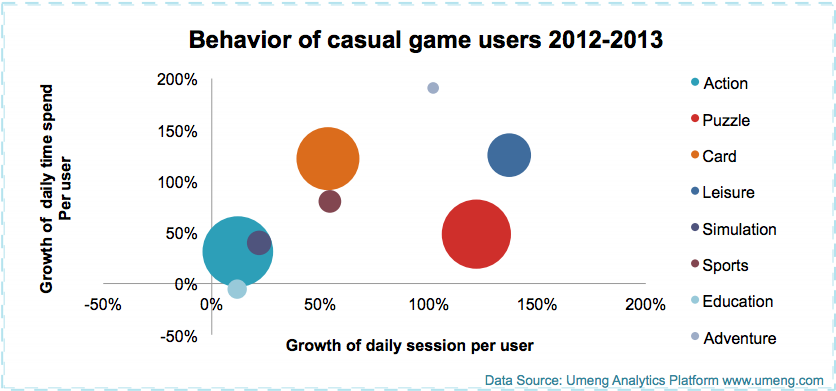
“With the loyalty of fans, game developers realized a well-known, officially licensed IP/brand will help them easily attract IP fans and get promoted in the app store and potentially acquire more high value users,” Umeng wrote.
In order to gain traction, developers should integrate top social networking services, like WeChat, Sina Weibo, QQ, and Renren into their apps. The amount of app content shared to all social media platforms by each Internet user every day has tripled over the last six months, Umeng says, with 48% from games.
WeChat was especially popular–the amount of app content shared through the messaging app grew by a whooping 8,600% between March and November 2013.
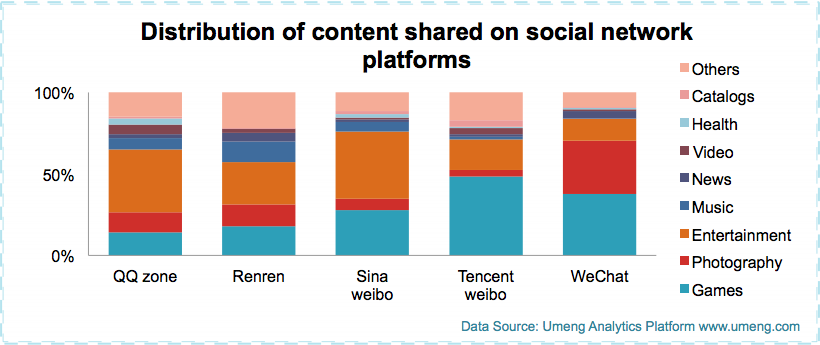
Of the top 1,000 apps, including games, in the Chinese market, 55% provide links to social media. Apps that benefited from viral marketing include MomentCam, which turns photos into caricature portraits, and a casual game called “Crazy Guess Figure.”
Umeng said non-game developers should keep an eye on the other five fastest growing mobile app categories, which are news, health and fitness, social networking, business, and navigation. Popular social networking apps included photo- and video-sharing apps, as well as app targeting niche markets, like dating and parenting.
